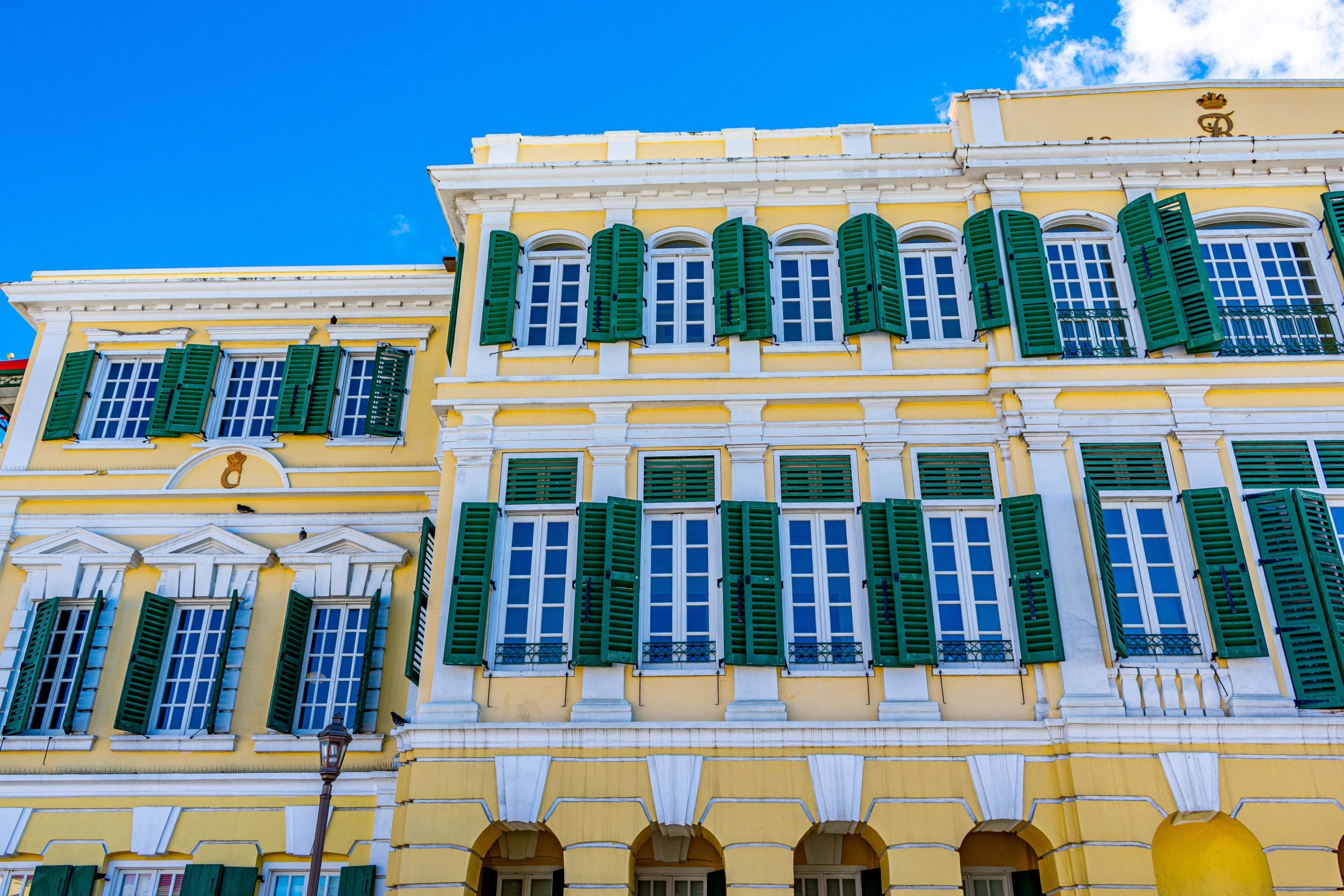Christiansted Government House and the Afro-Crucians Who Really Built St. Croix
The surviving neoclassical colonial architecture in St. Croix is strikingly beautiful. To me, no building better showcases this better than Christiansted Government House.
Schopen and Søbøtker Townhomes
The full structure actually encompasses three buildings. Two were formerly private residences, the oldest dating back to 1747. Johan Wilhelm Schopen, the building inspector at the time in Christiansted, owned that oldest townhouse. Today it is still known as the Schopen Wing of Government House.
The second oldest section of Christiansted Government House was built between 1794 and 1797. The owner was Adam Søbøtker, who for a time was the largest landowner in the Danish West Indies. He, like Schopen, was also a leading official with the Danish West India and Guinea Company. The semi-private business entity based in Copenhagen administered the Danish West Indies (including St. Croix) on behalf of the Danish Monarchy.
Søbøtker’s memory also survives to this day at Government House, the wing comprising his former residence bearing his name as well.
Private Homes Become Christiansted Government House
Eventually, the Schopen and Søbøtker families sold their townhomes to the local government; the Schopen’s in 1771 and the Søbøtker’s in 1829. It was Governor-General Peter von Scholten, who joined the two structures with a third in 1830. He also commissioned the construction of the dramatic stairway on the eastern facade, creating Christiansted Government House as we know it today.
All of this colonial history so intricately interwoven into the very fabric of the building that is the seat of political power in St. Croix today is somewhat problematic for some. I know I’ve had some personal misgivings about it in the past.
It is, though, the very striking beauty of Christiansted Government House, and more importantly, the knowledge of who actually created it, that squelches some of my qualms.
St. Croix’s Enslaved Master Craftsmen
I have social historian George F. Tyson to thank for the knowledge. His “Getting It Straight” chapter in Christiansted at 275 is a revelation. In it, Tyson outlines the societal construct of Christiansted in those early years of Danish colonial rule. In the process he proves that it was actually a labor force of skilled slaves and free Afro-Crucians – master masons, carpenters, blacksmiths, etc. – who surveyed, planned, and constructed the town’s iconic historic structures.
Tyson writes…
The establishment of Christiansted as a commercial and residential center during the eighteenth century has been chronicled by several Danish and American scholars… Explicit or implicit in all of this scholarly literature has been the assumption that the town was created solely by Danish know-how, investment capital, laws, entrepreneurship, leadership, craftsmanship, engineering and architectural skills. No writer has credited, and most do not even mention, the contribution of the majority of people who actually inhabited and built Christiansted – enslaved and free Africans.
Among the top enslaved master masons Tyson cites is Peter Tongelo. His construction skills were so great that he eventually bought his freedom and opened a successful carpentry business in Christiansted. He later purchased other slaves, freeing them to apprentice under him. Then he started purchasing land and properties throughout the town. Between 1756 and 1788, he owned nearly 30 town properties!
Incredible and enduring structures like Christiansted Government House are, in fact, as much a testament to Afro-Crucian skill and workmanship as anything else. I take a little extra pride looking up at Government House these days thanks to Mr. Tyson.
Christiansted at 275 is available at Undercover Books and Gifts in Gallows Bay, St. Croix, and other fine bookstores in the U.S. Virgin Islands.
